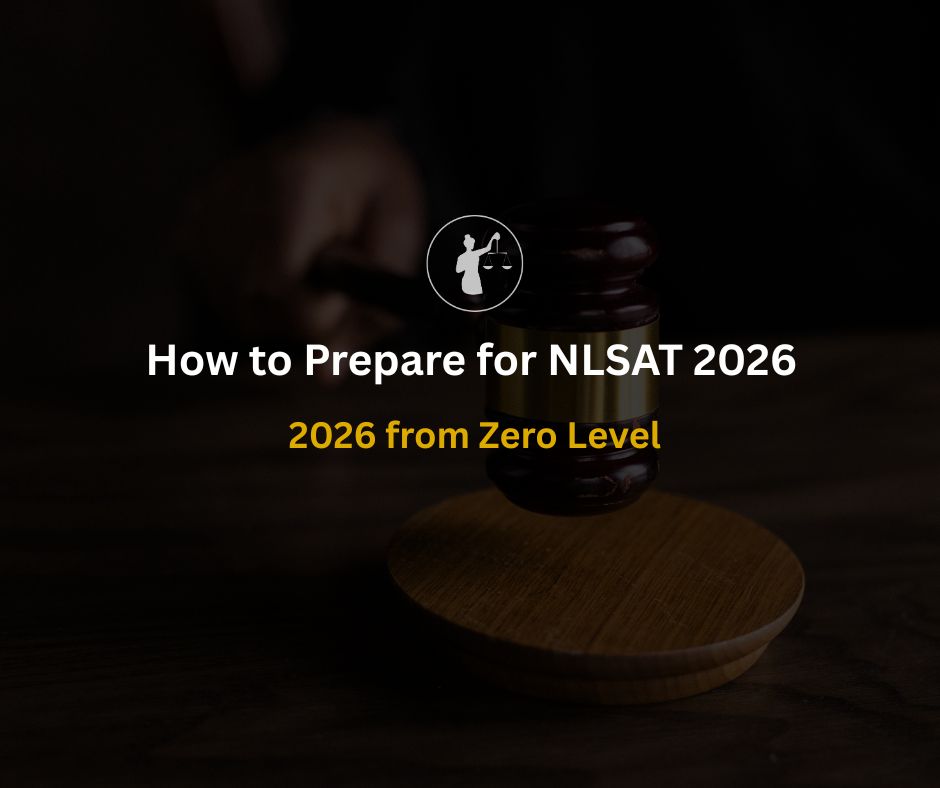
Summary:- While consistent effort is essential, strategic clarity is what distinguishes top scorers from average ranks. These 10 commonly overlooked mistakes derail too many CLAT 2026 aspirants. This guide highlights them with expert solutions, saving your prep time and boosting accuracy.
Mistake: Students take mocks but ignore reviewing mistakes.
Why it hurts: Unresolved errors repeat across tests and build wrong habits.
Solution: Use error logs that track what exactly went wrong, type, concept, question, fix. Then revisit each log weekly. .Toppers call this "closing the feedback loop."
Mistake: Solving questions casually or untimed.
Why it hurts: Real CLAT demands speed. Slow prep gives false confidence.
Solution: Always simulate timed conditions, even for sectional drills and every question set. Include full mocks with strict 2‑hour limits.
Mistake: Jumping across multiple books, PDFs, YouTube channels.
Why it hurts: Leads to confusion, scattered revision, and lack of focus.
Solution: Stick with 1–2 trusted resources per section, revise them thoroughly before adding anything new.
Read More: CLAT 2026: 60-Day Smart Revision Plan for Success
Mistake: Spending time only on what you already know.
Why it hurts: Weak segments like Legal or Quant remain undeveloped, dragging overall score.
Solution: Allocate at least 30–40% of prep time to your weakest section. Build incremental daily drills. Top rankers deliberately tackle their pain areas first.
Mistake: Cramming headlines or rushing GK in the last month.
Why it hurts: CLAT GK tests analysis, not just fact recall. Poor GK accuracy lowers overall score.
Solution: Use curated monthly digests, maintain “missed GK spreadsheet,” and test weekly. Understand implications, not just facts.
Mistake: Filling OMR sheet hurriedly at the end or making errors in bubbling.
Why it hurts: A single misbubbled answer knocks out multiple correct ones.
Solution: Practice bubbling during mocks. Adopt a consistent pattern, either fill passage‑wise or section‑wise in advance.
Read More:CLAT 2026 GK Marathon: 3-Month Plan to Master Static & Current Affairs
Mistake: Never revisiting old topics or notes after initial study.
Why it hurts: Memory fades, and gaps grow. Facts get forgotten.
Solution: Reserve 1‑2 days weekly strictly for revision. Even when covering new content, always review past logs and notes.
Mistake: Dismiss “silly” errors (like missing words, carelessness).
Why it hurts: Recurring small mistakes cost crucial marks under pressure.
Solution: Log every misread instruction, wrong “except/not,” or mis-click. Use a mock audit sheet for weekly review.
Mistake: Rigid schedules that don’t adjust for progress or setbacks.
Why it hurts: Real-life disruptions or cognitive fatigue throw you off rapidly.
Solution: Swap topics when needed. Adapt your plan weekly to reflect prep needs and energy levels.
Mistake: Solving doubts alone via random forums or guesswork.
Why it hurts: Wrong logic stays unchallenged; confusion persists.
Solution: Use structured mentorship where toppers from NLSIU or top NLUs personally clear key doubts. Peer groups only if disciplined and goal‑oriented.
Avoiding mistakes is only half the battle, replacing them with better systems is what sets toppers apart. The CLAT 2026 exam is not just a test of knowledge, but of how consistently and strategically you prepare over time. Every hour you spend fixing recurring errors, mastering weak sections, or improving your GK recall is an hour that compounds.
Don't wait till the last 30 days to change your approach.
Begin now by setting up your:
Error tracking log
Weekly mock audit sheets
Personal revision cycle
Time-bound practice structure
Read More : CLAT 2026 Registration: Step-by-Step Process
At NLTI, we’ve reverse-engineered the prep journey of top 50 rankers to build systems that eliminate the most common pitfalls in CLAT preparation:
Mentor-led doubt clearing from NLSIU and other top NLUs helps students fix foundational mistakes, not just surface-level confusion.
Mock strategy reviews ensure you don’t repeat the same time management or comprehension errors again.
Customized study plans evolve weekly based on your performance not just a one-size-fits-all schedule.
Live peer discussions keep motivation and clarity intact, even during burnout phases.
Structured Current Affairs tracking tools help eliminate the #1 reason many aspirants lose marks, poor retention of GK under pressure.
Whether you’re just starting out or already deep into your CLAT 2026 preparation, NLTI’s structured, mentorship-driven systems help you avoid these costly mistakes early and stay focused on rank, not just syllabus coverage.
FAQs: CLAT 2026 Preparation Mistakes
1. What is the biggest mistake CLAT aspirants make in the final 30 days?
Relying on last-minute cramming instead of focused revision and mock analysis. The final month should reinforce tested strategies, not introduce new chaos.
2. How many mocks should I take before CLAT 2026?
Ideally 35–40 full-length mocks, spaced weekly initially, then 2–3 per week closer to the exam. But the real key is analyzing them deeply after each attempt.
3. Can self-study alone help crack CLAT 2026?
While self-study works for some, lack of feedback, strategy correction, and expert guidance makes it riskier. Structured mentorship speeds up improvement and ensures mistake correction.
4. Is daily GK prep necessary for CLAT 2026?
Yes. Current Affairs forms a major scoring section. Daily engagement through digests, quizzes, and analysis builds long-term retention.
5. How much time should I spend on weak sections?
At least 30–40% of weekly prep time should target weak areas. Ignoring them leads to stagnant scores in mocks and actual exams.
6. Are sectional tests more important than full mocks?
Both are essential. Sectionals help improve accuracy and speed per topic, while full mocks build endurance and exam temperament.
7. Should I revise old material even during new topic coverage?
Absolutely. Weekly revision of older content prevents knowledge gaps and reinforces memory. It’s key to CLAT retention success.
8. How do I manage OMR practice if I'm giving mocks online?
Download printable OMR sheets and use them with online mocks. Practice bubbling alongside to build accuracy and timing.
9. What role do mentors play in CLAT preparation?
Mentors help correct logic flaws, optimize strategy, and ensure you're not wasting time on ineffective study patterns. Topper mentors add clarity and accountability.
10. Is it bad to use free resources from multiple CLAT platforms?
Yes, if unfiltered. Jumping across too many sources causes confusion. Pick trusted ones and stay consistent with your prep material.





